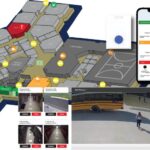In the dim pre-COVID past, I wrote an article detailing what we at the Idaho Office of School Safety and Security consider the foundational elements for K-12 school safety: effective communications, a limited sustainable response platform, a secure perimeter, and a commonly applied and efficient behavioral threat assessment process.
A March 2019 Campus Safety blog by Jesus Villahermosa is one I wish I had also written. The discussion of the role of public address systems in K-12 school emergency response was inspired and there is no need to re-plow that ground. What the response protocol is once the notification has been made is the obvious next topic.
K-12 schools are unique environments: a few adults entrusted with a moral, ethical, and legal imperative to protect many children of varying ages and cognitive abilities. Additionally, both student populations and the educator’s cadre are becoming increasingly mobile. If a group of emergency protocols are to be used in K-12 schools, they must be tailored to fit the realities of K-12 school operations. A school’s staff and teachers will become the on-site emergency response team. They are the backbone of the initial effort to save children’s lives. The actions a school community takes in the initial moments of an emerging threat or hazard are the key to protecting lives and property, emphasizing the need for an emergency response plan.
With student safety as the guiding principle, the motivation was to create a supported and implementable, common initial response platform meeting the needs and realities of Idaho schools. Partnerships and collaboration are essential for both emergency planning and incident response. The Idaho Standard Command Responses for Schools (ISCRS) program is the outcome of a collaborative effort between school officials and first responders from diverse areas of Idaho. Ten months and hundreds of hours of work from individuals in more than fifty agencies were dedicated to this task. Designed to be delivered to schools by a local first responder in conjunction with school administration, the process supports a closer relationship between Idaho’s K-12 schools and the first responders who serve them.
The goal of the ISCRS program is to determine the common actions initially required in most school incidents and then define a limited number of protocols to accomplish common elements. The common initial elements are simple: immediately move away from the threat to a place of safety, provide positive accounting for students, and prepare for the next step. The variation in the protocols is determined by the location, magnitude and nature of the threat, and the location of the school population.
The ISCRS was developed as a flexible framework for initial response by a school population. Effective school initial response involves a mixture of well-defined procedures, consistent training, and improvisation. Improvisation is both necessary and beneficial, but it needs to be governed by prior planning, common procedures, and training. The ISCRS program’s four defined initial procedures (Evacuation, Reverse Evacuation, Hall Check and Lockdown), coupled with training, a focus on alert purposeful movement, and adaptability, will give schools a highly effective response capability.
Tailoring the Program to a Specific Incident
The ISCRS is an “options-based” program that embraces improvisation. This means school staff members are authorized and trained to make decisions on specific actions for themselves and their students based on the observed conditions in their immediate surroundings. The ISCRS protocols were designed not for rote compliance, but rather as a framework to help guide the decision-making process at the classroom level. As initial responses, the four ISCRS protocols do just that.
The protocols can be instituted with a simple P.A. announcement or other type of immediate notification method and the command reference should be in the title. A simple command produces a known, practiced and predictable response from the school community. This does not imply a routine response, but rather a highly aware and flexible reaction to a threat, culminating with students and staff in a safe position and prepared for their next action.
All four initial protocols share some common elements. The notification of the response signals students, teachers and other school staff to an awareness outside their classroom and normal educational activities. It triggers them to implement a specified action while always assessing and reacting to their observed conditions. This relies on staff “situational awareness” and is the options-based imperative of the ISCRS.
Situational awareness is a key element in the ISCRS program, but a term that educators may not be familiar with. Situational awareness is the perception of environmental elements, the comprehension of their meaning, and the projection of their condition after some variable has changed. This concept, however, is something that teachers use daily. In instruction, teachers are continually reading facial expressions and body language and adjusting instruction based on that input. We use this similarity to the instructional process to help educators understand and apply situational awareness to the ISCRS incident response framework.
In all cases, these actions give the onsite incident commander/principal/designee a measure of time to assess the situation and determine the next action while the school community is moving into a safe condition. Each of the protocols is designed as a stand-alone process but may be enacted in sequence as dictated by the incident situation.
The school notification and initiation process was intentionally designed using easily understood, plain language. Plan failure has occurred because school staff members can confuse different codes when they are used in a crisis. All communications during an incident should be in plain language; this ensures that information dissemination is timely, clear, acknowledged, and understood by all intended recipients.
Movement away from a threat is a common-sense response to a dangerous situation; how that movement is accomplished is the critical concern in any K-12 school incident. Simply running away is likely to engender panic. Purposeful movement in an unknown threat environment is the goal and is an element of all four ISCRS responses.













